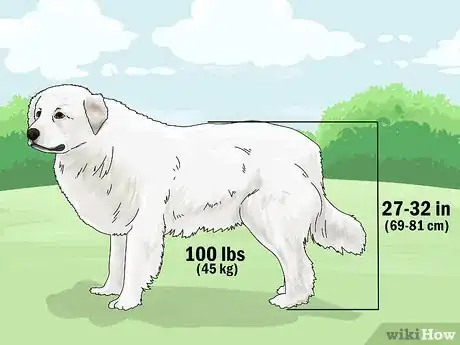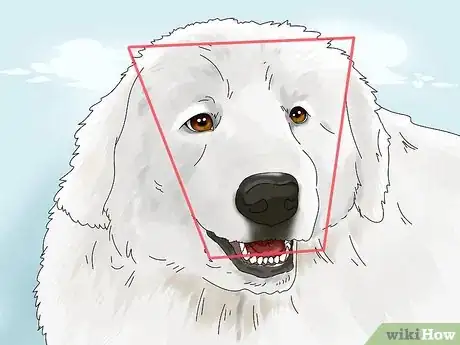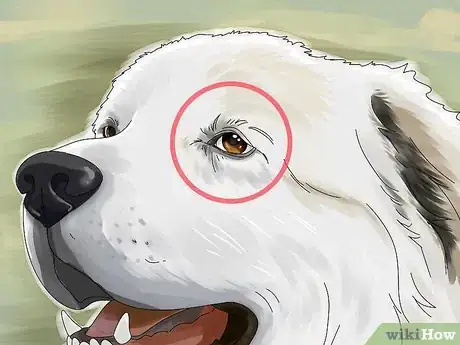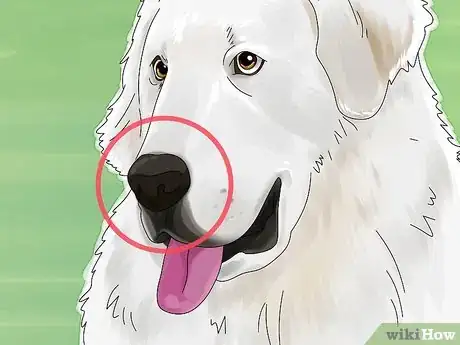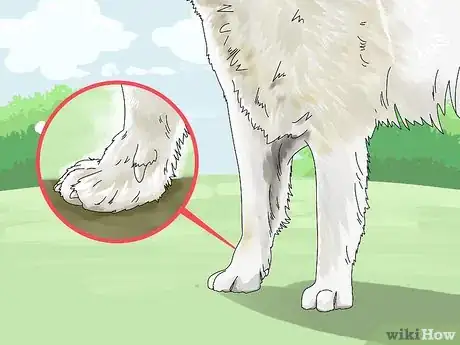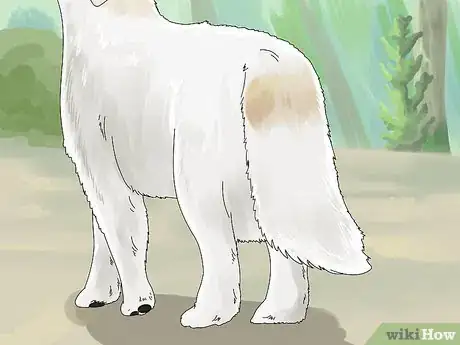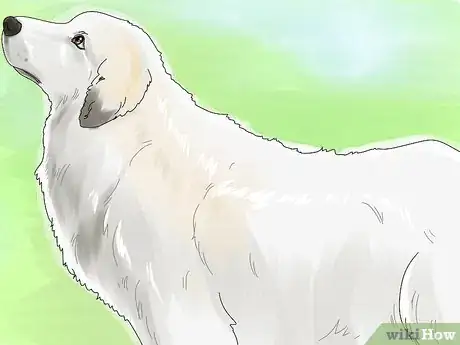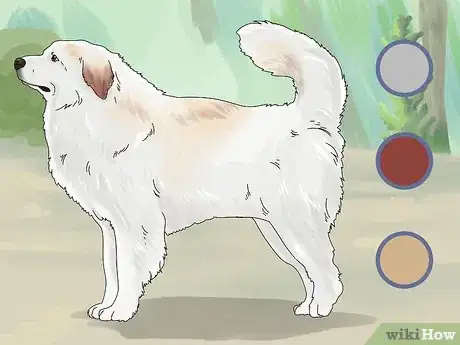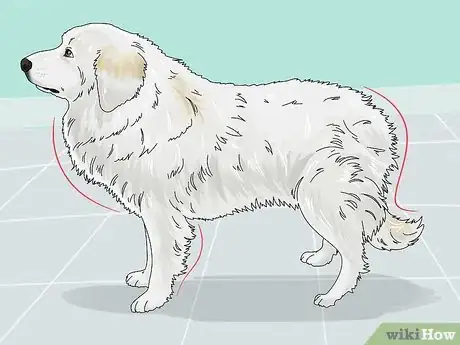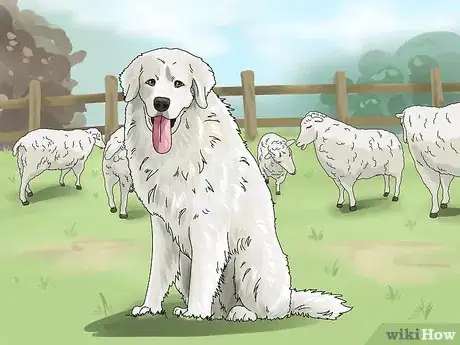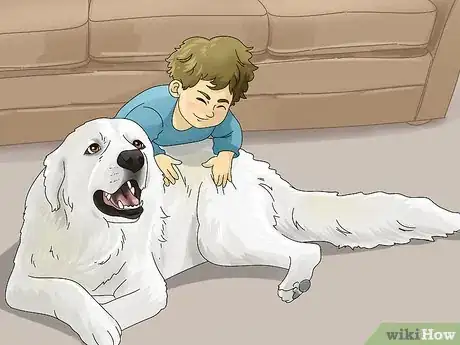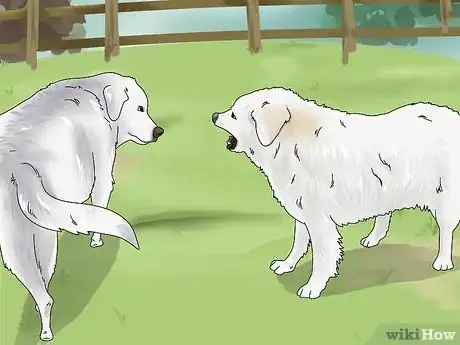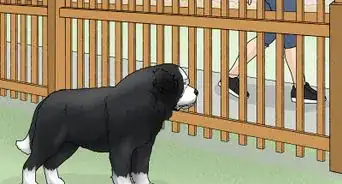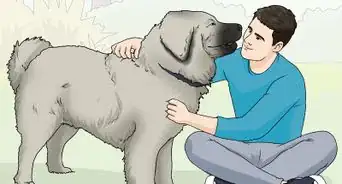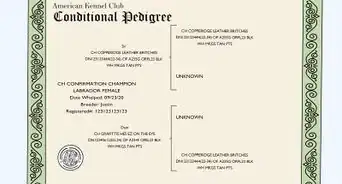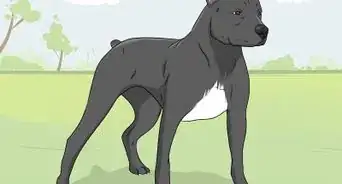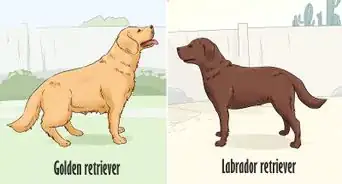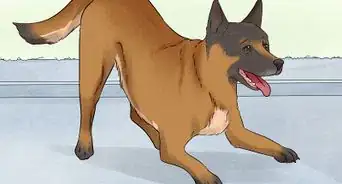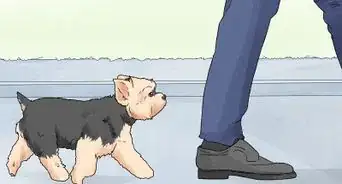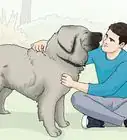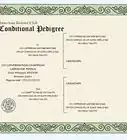wikiHow is a “wiki,” similar to Wikipedia, which means that many of our articles are co-written by multiple authors. To create this article, volunteer authors worked to edit and improve it over time.
This article has been viewed 14,764 times.
Learn more...
The Great Pyrenees is a guarding breed from the Pyrenees Mountains and part of the working group.[1] Working alongside shepherds and herding breeds, Great Pyrenees were present to watch the flock and protect it if need be.[2] Though Great Pyrenees have several distinguishing features, they do share a few characteristics with other breeds of dog. By learning to recognize which traits are unique to this breed, this wikiHow will help you identify a Great Pyrenees.
Steps
Examining the Structure
-
1
-
2Look at the head. A Great Pyrenees has a head that resembles a wedge without appearing heavy. It is a bit round at the crown and roughly as long as it is wide with flat cheeks but no noticeable stop.[5]Advertisement
-
3Notice the ears. The ears of a Great Pyrenees look like the letter v but rounded at the end. They are either small or medium-sized and hang down, flat, and close to the head from the level of the eyes.[6]
-
4Check the eyes. Great Pyrenees have eyes of a medium size and dark brown color. They are shaped like almonds and set fairly oblique with black rims and a contemplative yet elegant expression. Between them, there is a furrow.[7]
-
5Spot the muzzle. The muzzle of a Great Pyrenees is about the same length as the backskull which it blends in with. The lips fit tightly so that the upper covers the lower, and both the lips and nose are pigmented black. The lower part of the jaw appears strong, and the teeth meet in a scissors or level bite.[8]
-
6Examine the paws. A Great Pyrenees has roughly round paws that appear cupped closely. The pads are good, and the toes are arched. While the front legs each have one dewclaw, the back legs each have two.[9]
-
7View the tail. The tail of a Great Pyrenees is plumed and long enough to hang down to the hock. It may be carried over the dog's back or low.[10]
-
8Analyze the dog's overall build. Great Pyrenees are balanced, of medium substance, rectangular, and elegant. They have a very well-muscled neck, laid-back shoulders, a fairly broad chest, oval and well-sprung ribs, a level topline, and straight legs. Their gait is comprised of balance, agility, elegance, reach, and drive, with the legs approaching the center line as the dog moves faster.[11]
Looking at the Coat
-
1Take note of the coat's quality. Great Pyrenees have double coats consisting of a thick and long outercoat that lies flat and usually straight, and a dense undercoat that feely woolly to the touch. The overall coat is weather-resistant.[12]
-
2View the coat color. Typically, Great Pyrenees are solid white. They may, however, have a few grey, tan, reddish brown, or badger colored markings on the head, ears, tail, and as spots on the body, and the dog's undercoat can be solid white or a shaded color.[13]
-
3Notice feathering. A mane or ruff appears around the neck and shoulders of a Great Pyrenees, usually more noticeable in male dogs. The tail is well-plumed, and other feathering appears on the back of the legs, while the coat on the ears and head is a bit shorter in length and feels more fine.[14]
Checking Temperament
-
1See how the dog acts around livestock. Originally bred to guard livestock, Great Pyrenees are capable of watching over a flock. This can make them a bit independent but also vigilant.[15]
Did you know? Not only were Great Pyrenees bred to watch over livestock - they were bred to do so during the night, making them naturally nocturnal.[16]
-
2Notice affection. Great Pyrenees are known to be an affectionate family breed. They can do great with children because of this and their high levels of patience.[17]
-
3Be aware of aggression toward other animals. Though Great Pyrenees are typically fine with animals that are part of their family, they may act aggressive or territorial toward any that aren't. They do this in order to best guard their "flock" and defend against unfamiliar creatures.[18]
-
4Take note of confidence. Due to their background, Great Pyrenees are naturally confident and fearless guardians. They are strong-willed and quick to defend against any trouble.[19]
-
5Understand the dog's exercise requirements. As a working breed, Great Pyrenees need their exercise to stay healthy and in shape. However, they do not do well in excessive heat or very humid climates.[20]
References
- ↑ https://www.akc.org/dog-breeds/great-pyrenees/
- ↑ https://www.akc.org/dog-breeds/great-pyrenees/
- ↑ https://www.akc.org/press-releases/the-15-largest-dog-breeds-more-dog-to-love/
- ↑ https://www.akc.org/dog-breeds/great-pyrenees/
- ↑ https://images.akc.org/pdf/breeds/standards/GreatPyenees.pdf
- ↑ https://images.akc.org/pdf/breeds/standards/GreatPyenees.pdf
- ↑ https://images.akc.org/pdf/breeds/standards/GreatPyenees.pdf
- ↑ https://images.akc.org/pdf/breeds/standards/GreatPyenees.pdf
- ↑ https://images.akc.org/pdf/breeds/standards/GreatPyenees.pdf
- ↑ https://images.akc.org/pdf/breeds/standards/GreatPyenees.pdf
- ↑ https://images.akc.org/pdf/breeds/standards/GreatPyenees.pdf
- ↑ https://images.akc.org/pdf/breeds/standards/GreatPyenees.pdf
- ↑ https://images.akc.org/pdf/breeds/standards/GreatPyenees.pdf
- ↑ https://images.akc.org/pdf/breeds/standards/GreatPyenees.pdf
- ↑ https://www.yourpurebredpuppy.com/reviews/greatpyrenees.html
- ↑ https://www.akc.org/expert-advice/lifestyle/9-facts-great-pyrenees/
- ↑ https://www.dogtemperament.com/great-pyrenees-temperament/
- ↑ https://www.yourpurebredpuppy.com/reviews/greatpyrenees.html
- ↑ https://www.dogtemperament.com/great-pyrenees-temperament/
- ↑ https://www.yourpurebredpuppy.com/reviews/greatpyrenees.html
